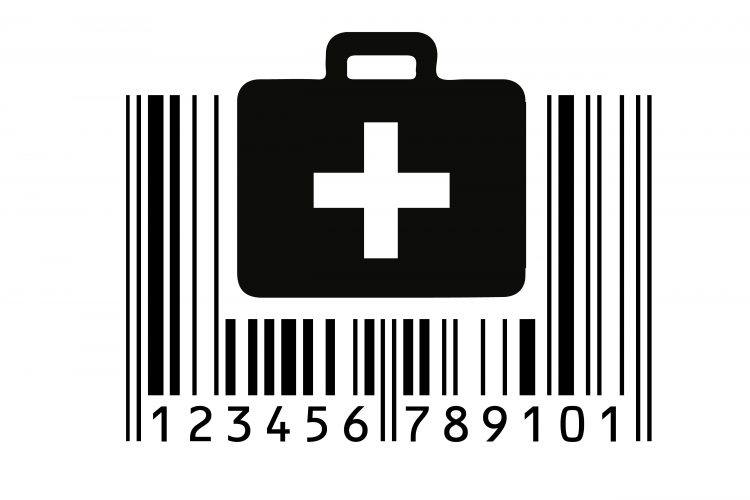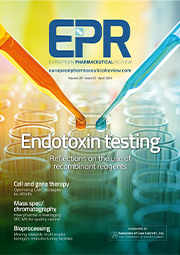Five expert views on Track and Trace
Posted: 17 April 2018 | Dr Stefan Oeing, Ettore Cuccetti, Joe Lipari, William Minaeff, Yanik Beaulieu | No comments yet
European Pharmaceutical Review’s roundtable devoted to track and trace technology. Five industry experts focus on how the contribution of track and trace technology is shaping the pharmaceutical sector and explain what factors are driving that change.


WILLIAM MINAEFF, SR: The pharma marketplace is under increasing pressures to balance shareholder values and rights with regulatory requirements, global market place competitiveness, consumer perception, and intellectual property protection as well as return on investment on research. Most research does not yield a marketable, profitable product yet there is an increasing viewpoint of big pharma as simply profit-driven machines. These pressures exist, yet all responsible pharma companies I have ever been involved with have deep commitments to patient safety as their first and most important goal.
DR STEFAN OEING: Track and trace systems are very much related to computer capabilities, cloud computing, data security and integrity, and overall data availability. There has been and continues to be significant progress in all these areas. At the same time, industrially applicable track and trace systems for the pharmaceutical sector were perfected. For example, higher level software systems are increasingly working generically and are supplied with flexible workflow engines. Furthermore, the need to create standardised, generic interfaces to central systems such as country hubs, gateways, etc, has been identified. This will ease interoperability between all participants of a complex track and trace system significantly.
YANIK BEAULIEU: The main change has been the passage from a potential law into reality. Although many challenges still remain, we can see that traceability is a worldwide movement. It goes much further than simply applying a serial number to a container. Solution providers now offer a broad range of customisable and complete solutions from manufacturer to dispenser.
JOE LIPARI: I would argue that track and trace was just as important 10 years ago as it is today. We’ve all been tracking uniquely identified packages through our logistics provider of choice for quite some time now. The intensity of importance has certainly changed in pharma as global regulations have taken shape and placed a substantial interest on the ability to not only share data with trade partners but report to regulatory agencies as well.
What factors are driving those changes?
ETTORE CUCCETTI: There are few key actors that are driving this change. The foremost reason is the need for the pharmaceutical industry to thwart the industry-crippling issue of counterfeiting of the products. Another reason is that track and trace industry is mainly driven by country-specific regulations across the globe. Add to these, technology advancements such as: the Internet of Things, machine learning, big data analytics and artificial intelligence – all of which are playing a key role in bringing about disruption at various levels across many industries.
WILLIAM MINAEFF, SR: I believe that as more and more information is made available to the marketplace, more transparency of the products’ lifecycle will be exposed through increased implementation of integrated software systems. Across the enterprise, consumers will be better informed about what’s involved in the world of pharma and hopefully, that will help to shine a light on what goes into producing these products.
DR STEFAN OEING: The pharmaceutical sector is becoming ever more interconnected and internationalised. This applies both to production with contract manufacturing organisations and to data provision for all addressed markets. Increasingly, more countries are legislating for the serialisation and aggregation of pharmaceutical products, so that a holistic software solution becomes indispensable.
YANIK BEAULIEU: Many countries are having their laws / recommendations reinforced. The appearance of some national hubs contributes in expanding track and trace to the whole supply chain. That is allowing repackagers, distributors and dispensers to jump into the game. Meanwhile, the early adopters and corporate global deployment is helping to set the pace for organisations to reach serialisation readiness ahead of the major legal deadlines.
JOE LIPARI: Within life sciences, compliance is the key driver. Federal regulations mandate track and trace requirements. Within other verticals, the desire for transparency into where goods are sourced and how they travel through the supply chain is a major driver for traceability. There is increased pressure to bring transparency to where food is sourced, how goods are manufactured, sustainability, and the need to combat diversion and dishonest supply chain actors.
Will track and trace technology increasingly feature blockchain?
ETTORE CUCCETTI: The aim of the track and trace solution is to track the source or, in other words, the authenticity of the product throughout the supply chain up until the consumer. As a technology, blockchain is bringing a wave of changes across industries, especially in the finance industry. One can attribute its success to its capabilities to provide inherent transparency, security and reliability. The pharma industry will follow suit. When it comes to track and trace, we anticipate many companies will incorporate blockchain in their business processes in years to come.
WILLIAM MINAEFF, SR: The world is getting smaller, but the size of the data is increasing rapidly. The need to support multiple markets with geographic and regulatory requirements becomes a driver for an increase in software systems that reduce errors by ensuring the correct requirements are applied. This allows a packaging system operator or a warehouse material handler to focus on their respective roles and let the software manage the complexities of the modern global manufacturer and simplify the process for the operational staff. The impact is felt from the planning and ability to promise algorithms that support sales efforts across the marketspaces, to the most granular operational tasks needed to fulfil the production requirements and the multiple systems and sub-systems that exist between them.
DR STEFAN OEING: Blockchain will be the appropriate means to ensure data integrity and validity, especially for chained data. This is already being implemented within some track and trace systems, eg, to secure audit trail messages in databases. Increasingly, however, this technology will also be used in external communications. It typically manages a peer-to-peer network, collectively adhering to a protocol for validating new blocks. Once recorded, the data in any given block cannot be altered retroactively without the alteration of all subsequent blocks, which requires collusion of the network majority. In this respect, blockchains are secure by design. This makes blockchains suitable for the recording of events, medical records, identity management, transaction processing, documenting provenance, and much more.
YANIK BEAULIEU: It is a strong possibility. With the actual interest about blockchain and the evolution of technology, the secure aspect of data transaction between cloud platform can definitely benefit from the blockchain concept.
JOE LIPARI: There is a sharply polarised view within the healthcare industry with regard to blockchain. This truly hyper-partisan view of a technology leaves most scratching their heads regarding what to believe. Blockchain, as a technology, has the potential to redefine how business is conducted. Let’s face it, different industries are ripe for disruption including any industry involved in supply chain operations. While pharmaceutical and healthcare trading partners may not be exchanging bitcoins for drug products, development of an interoperable platform that will meet track and trace requirements could absolutely be met using blockchain technology. Systech are currently investing in multiple pilots utilising the technology and are optimistic that it can bring real value.
WHAT DO YOU THINK?
Do you share the views of our industry insiders? Or, are there points you think need to be added to our debate? Please email your comments to [email protected] to join the discussion about track and trace technology.
Meanwhile, watch out for our experts’ comments on how track and trace will develop in the pharmaceutical sector over the next 10 years by visiting www.europeanpharmaceuticalreview.com
The rest of this content is restricted - login or subscribe free to access


Why subscribe? Join our growing community of thousands of industry professionals and gain access to:
- bi-monthly issues in print and/or digital format
- case studies, whitepapers, webinars and industry-leading content
- breaking news and features
- our extensive online archive of thousands of articles and years of past issues
- ...And it's all free!
Click here to Subscribe today Login here
Issue
Related topics
Related organisations
ACG Inspection, Adents, Atlantic Zeiser Ltd, Optel Group, Systech International








